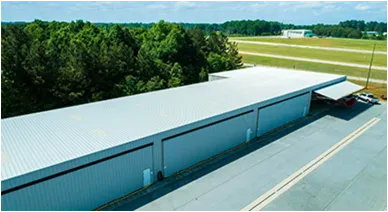- Afrikaans
- Albanian
- Amharic
- Arabic
- Armenian
- Azerbaijani
- Basque
- Belarusian
- Bengali
- Bosnian
- Bulgarian
- Catalan
- Cebuano
- Corsican
- Croatian
- Czech
- Danish
- Dutch
- English
- Esperanto
- Estonian
- Finnish
- French
- Frisian
- Galician
- Georgian
- German
- Greek
- Gujarati
- Haitian Creole
- hausa
- hawaiian
- Hebrew
- Hindi
- Miao
- Hungarian
- Icelandic
- igbo
- Indonesian
- irish
- Italian
- Japanese
- Javanese
- Kannada
- kazakh
- Khmer
- Rwandese
- Korean
- Kurdish
- Kyrgyz
- Lao
- Latin
- Latvian
- Lithuanian
- Luxembourgish
- Macedonian
- Malgashi
- Malay
- Malayalam
- Maltese
- Maori
- Marathi
- Mongolian
- Myanmar
- Nepali
- Norwegian
- Norwegian
- Occitan
- Pashto
- Persian
- Polish
- Portuguese
- Punjabi
- Romanian
- Russian
- Samoan
- Scottish Gaelic
- Serbian
- Sesotho
- Shona
- Sindhi
- Sinhala
- Slovak
- Slovenian
- Somali
- Spanish
- Sundanese
- Swahili
- Swedish
- Tagalog
- Tajik
- Tamil
- Tatar
- Telugu
- Thai
- Turkish
- Turkmen
- Ukrainian
- Urdu
- Uighur
- Uzbek
- Vietnamese
- Welsh
- Bantu
- Yiddish
- Yoruba
- Zulu
Dec . 13, 2024 10:56 Back to list
The Rise of Steel Buildings A Modern Architectural Marvel
In contemporary architecture, steel buildings have gained widespread prominence due to their remarkable advantages in design flexibility, durability, and sustainability. As urbanization accelerates and the demand for innovative construction solutions rises, steel structures are increasingly becoming the backbone of modern infrastructure.
Steel, an alloy primarily composed of iron and carbon, possesses unique properties that make it ideal for construction. It is lightweight yet incredibly strong, allowing for the creation of expansive open spaces without the need for excessive internal columns. This attribute enables architects to design buildings that are not only aesthetically pleasing but also functional, catering to a variety of uses from residential to commercial and industrial purposes.
One of the key advantages of steel buildings is their rapid construction timeline
. Unlike traditional materials such as concrete, which require substantial curing time, steel components can be prefabricated off-site. This means that when they arrive at the construction location, they can be quickly assembled, significantly reducing the overall project duration. As the world faces increasing pressures for timely development, the speed of steel construction can be a game-changer.Moreover, steel's resilience against adverse environmental conditions makes it an excellent choice for building in diverse climates. Steel structures can withstand high winds, heavy snow loads, and seismic activities, making them particularly suitable for regions prone to such challenges. This durability translates into lower maintenance costs over the lifetime of the building, making steel a cost-effective option in the long run.
steel building

Sustainability is another crucial factor driving the adoption of steel in construction. Steel is 100% recyclable, and the use of recycled steel in building projects significantly reduces the demand for new raw materials. Many modern steel buildings are designed with energy efficiency in mind, incorporating green technologies such as solar panels and advanced insulation systems. This not only minimizes their carbon footprint but also aligns with global efforts to combat climate change.
The design possibilities with steel are virtually limitless. From iconic skyscrapers like the Burj Khalifa to innovative sports venues such as the London Olympic Stadium, steel buildings can be crafted into striking and memorable forms. The ability to manipulate steel allows architects to push the boundaries of creativity, resulting in structures that are both functional and visually stunning. The use of steel also facilitates a wide range of architectural styles, from minimalist and modernist to more traditional designs.
However, it is essential to address some challenges associated with steel construction. The initial costs of steel can be higher than those of conventional materials, and it requires adequate fireproofing and protection against corrosion. Proper planning and engineering are vital to ensure that these aspects are effectively managed.
In conclusion, the rise of steel buildings illustrates a significant shift in architectural practices, embracing the advantages of modern materials and technology. As cities continue to expand and evolve, steel structures will undoubtedly play a pivotal role in shaping the urban landscape. With their blend of durability, sustainability, and design potential, steel buildings are not just a trend; they represent the future of construction, combining innovation with practicality to meet the complex demands of modern society. As we look ahead, the steel framework will continue to lay the groundwork for the cities of tomorrow.
-
How Do Prefabricated Steel Structures Transform Modern Construction?
NewsJul.14,2025
-
How Do Prefabricated Metal Buildings Redefine Modern Construction?
NewsJul.14,2025
-
How Do Prefab Insulated Metal Buildings and Steel Structures Revolutionize Modern Construction?
NewsJul.14,2025
-
How Do Pre - Engineered Steel Structures Redefine Modern Construction?
NewsJul.14,2025
-
Advancing Modular Construction with Prefabricated Metal Structures
NewsJul.14,2025
-
Advancing Industrial Infrastructure with Prefabricated Steel Solutions
NewsJul.14,2025
Products categories
Our Latest News
We have a professional design team and an excellent production and construction team.












